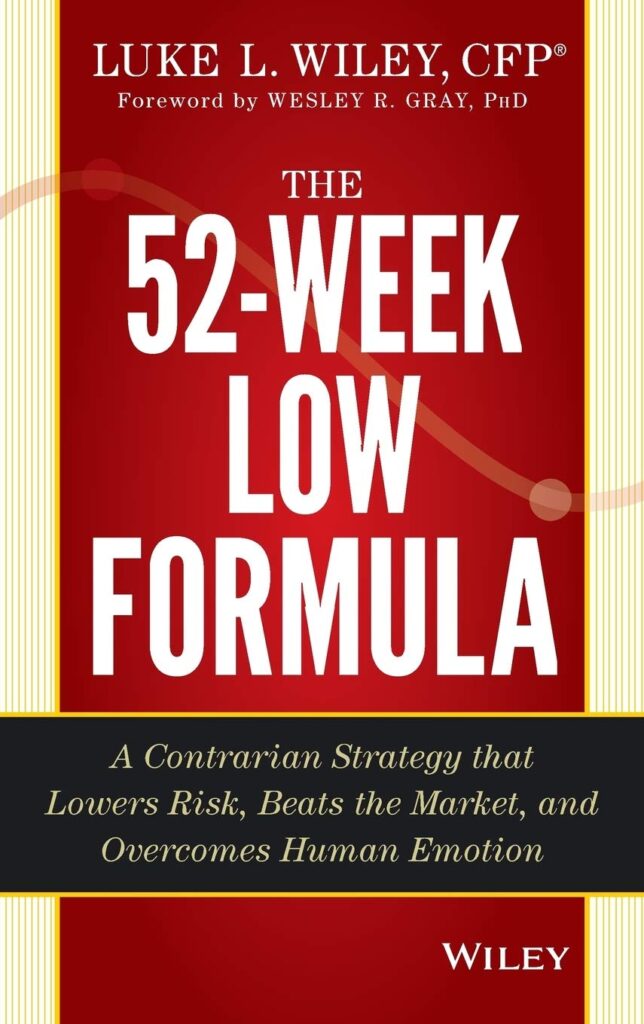52-week-low stock strategy

In The 52-Week Low Formula: A Contrarian Strategy that Lowers Risk, Beats the Market, and Overcomes Human Emotion, wealth manager Luke L. Wiley, CFP examines the principles behind selecting the outstanding companies and great investment opportunities that are being overlooked.
What is this value investing book called 52-week Low Formula about?
The book cover puts it this way: A contrarian strategy that lowers risk, beats the market, and overcomes human emotion.
Author Luke Wiley said in the book: “It is about buying the “right business” at its 52-week low versus buying “any business” at its 52-week low. if it is the wrong business that operates in an industry with poor economics (e.g., the steel industry), then there is a high probability that that company will continue to reset its 52-week low and you could permanently lose your investment.”
The key words to remember are “buying the right business at its 52-week low“.
There are five filters in the 52-week low formula:
Filter 1: Competitive advantage. Studying industries that are known to have good economics, high barriers to entry, customer loyalty, and limited alternatives.
Filter 2: Free cash flow yield: setting a requirement that any company worth investing inmust provide a cash flow multiple over the risk-free rate. This means buying a business with a margin of safety.
Filter 3: Reurn on invested capital: looking at industries and companies that not only generate returns on capital over their cost of capital currently but have a knack for generating returns on capital in excess of their cost of capital over 10 years.
Filter 4: Long-term debt to free cash flow ratio: be aware that leverage can magnify business results for the good and for the bad.
Filter 5: The 52-week low formula: identifying companies trading below their historic and recent high prices. Buying low and selling high is Economics 101 thinking.
This book by wealth manager Luke Wiley is an easy read backed by many case studies and worked examples. It is strongly recommended as an addition to the book shelf of the value investor.